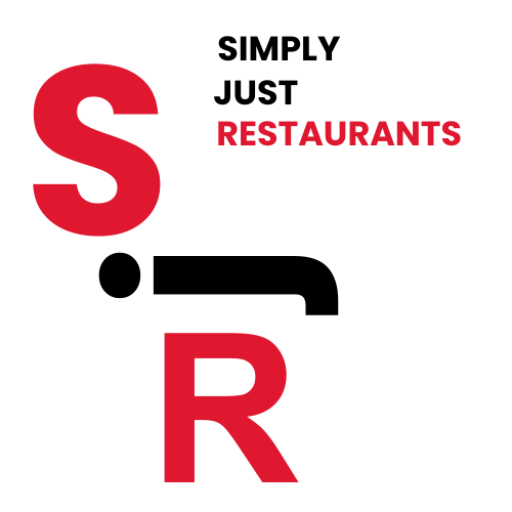Choosing a unique restaurant name is a crucial step in establishing your brand identity and attracting customers. A well-thought-out name can convey your restaurant’s theme, cuisine, and personality, setting you apart from competitors.
This comprehensive guide will provide step-by-step details on how to create a unique restaurant name that resonates with your target audience and reflects your brand values.

Importance of a Unique Restaurant Name
A unique restaurant name serves several important functions:
- Brand Identity: It defines who you are and what you stand for.
- Memorability: A unique name is easier for customers to remember.
- Marketing: It enhances your marketing efforts, making your restaurant more appealing.
- Differentiation: It sets you apart from competitors and helps avoid legal issues related to trademark infringement.

Steps to Create a Unique Restaurant Name
Understand Your Brand
- Mission and Vision: Clarify your restaurant’s mission and vision.
- Cuisine and Theme: Identify the type of cuisine and overall theme of your restaurant.
- Values and Personality: Define your brand values and personality traits.
Identify Your Target Audience
- Demographics: Determine the age, gender, income level, and preferences of your target audience.
- Psychographics: Understand their lifestyle, interests, and dining habits.
- Local vs. Tourist: Decide if you are targeting locals, tourists, or both.
Brainstorming Ideas
- Creative Sessions: Hold brainstorming sessions with your team.
- Word Associations: Use word associations related to your cuisine, theme, and location.
- Mind Mapping: Create a mind map to explore different ideas and connections.
Using Name Generators and Tools
- Online Tools: Use online name generators and tools to spark ideas.
- Thesaurus and Dictionaries: Explore synonyms and related words for inspiration.
Checking Availability
- Domain Name: Check if the domain name is available for your restaurant’s website.
- Social Media Handles: Ensure that social media handles are available and consistent.
- Trademark Search: Conduct a trademark search to avoid legal issues.
Testing Your Name
- Feedback: Gather feedback from friends, family, and potential customers.
- Visual Test: Create mock logos and signage to see how the name looks in print and online.
- Pronunciation and Spelling: Ensure the name is easy to pronounce and spell.

Types of Unique Restaurant Names
Descriptive Names
- Overview: Describe the main offering or theme of the restaurant.
- Examples: “Burger Haven,” “Pasta Palace.”
- Pros: Clear and straightforward.
- Cons: May lack creativity.
Creative and Abstract Names
- Overview: Use imaginative and unique words or phrases.
- Examples: “Blue Moon Bistro,” “Firefly Café.”
- Pros: Memorable and distinctive.
- Cons: May require more marketing to explain the concept.
Cultural and Ethnic Names
- Overview: Reflect the cultural or ethnic background of the cuisine.
- Examples: “Sakura Sushi,” “El Mariachi.”
- Pros: Authentic and specific.
- Cons: May limit the perceived menu options.
Location-Based Names
- Overview: Include geographic locations or landmarks.
- Examples: “Bay View Grill,” “Central Park Eatery.”
- Pros: Easy for locals and tourists to remember.
- Cons: May not be unique if the location is common.
Themed Names
- Overview: Reflect a specific theme or concept.
- Examples: “Pirate’s Cove Seafood,” “Medieval Feast.”
- Pros: Creates a strong brand identity.
- Cons: Can be limiting if you want to expand or change the theme.

Common Mistakes to Avoid
- Overcomplicating the Name: Keep it simple and easy to remember.
- Ignoring Audience Feedback: Listen to feedback from your target audience.
- Neglecting Legal Checks: Ensure the name is not trademarked by another business.
- Choosing a Trendy Name: Avoid names that might quickly become outdated.
- Failing to Check Online Presence: Ensure the name is available as a domain and on social media platforms.

Examples of Successful Unique Restaurant Names
- Chipotle: Simple, memorable, and reflective of its Mexican cuisine.
- The Cheesecake Factory: Descriptive and indicative of its extensive menu and specialty.
- P.F. Chang’s: Unique and easily recognizable, with a nod to its Asian-inspired cuisine.
- Olive Garden: Conveys a sense of Mediterranean cuisine and hospitality.
- Shake Shack: Fun, memorable, and indicative of its burger and shake offerings.
Conclusion
Choosing a unique restaurant name is a critical step in building a strong brand identity. By understanding your brand, identifying your target audience, brainstorming creatively, and checking availability, you can create a name that stands out and attracts customers.
Avoid common mistakes, test your name with your audience, and ensure it aligns with your restaurant’s mission and vision. A well-chosen name will not only help in marketing your restaurant but also leave a lasting impression on your customers.
About Author nikita kapali
You May Also Like…
The Ultimate Guide to Hiring a Consultant Chef
Introduction Food trucks or mobile food trucks is an idea that has arrived. But, there is a issues with food safety in...
Food Safety Essentials: Addressing 5 Common Problems in Food Trucks
Introduction Food trucks or mobile food trucks is an idea that has arrived. But, there is a issues with food safety in...



